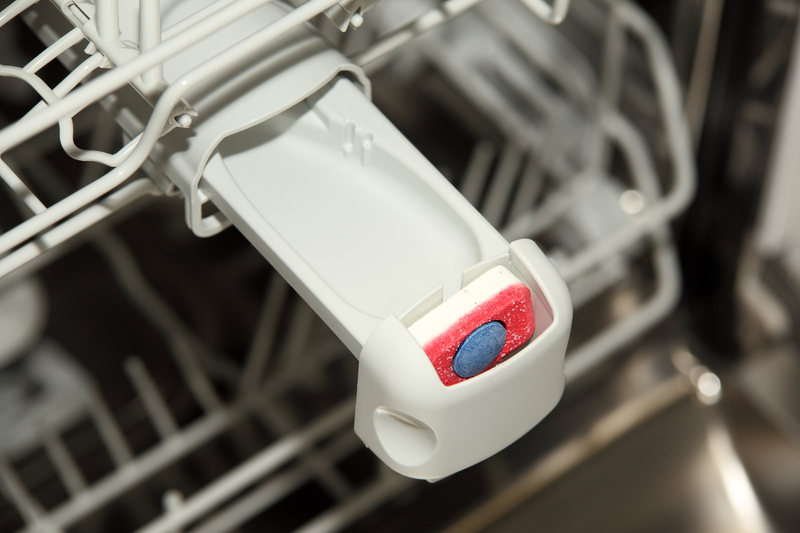Wave Goodbye to Damp Smells with These Tips
Posted on 22/06/2025
Wave Goodbye to Damp Smells with These Tips
Are you tired of that musty, damp smell lingering in your home? Let's face it - there's nothing quite as off-putting as stepping into a room greeted by an unpleasant moist, stale odour. Not only does dampness leave your living space smelling disagreeable, but it can also lead to long-term issues such as mould growth and health problems. Wave goodbye to damp smells once and for all with these practical, actionable tips that tackle moisture at its source.
Understanding the Cause of Damp Smells
Before you can eradicate damp odours, it's essential to understand what causes them. Musty smells typically indicate the presence of excess moisture in the air or fabric surfaces. Over time, this moisture creates the perfect environment for mildew, mould, and bacteria, all of which can contribute to nasty smells.
- Leaky pipes and roofs
- Poor ventilation in bathrooms or basements
- High humidity areas in the home
- Poorly dried laundry
- Condensation on windows and walls
Finding the source quickly is crucial -- otherwise, you might just be masking the smell instead of fixing the issue. Let's explore proven ways to get rid of damp smells and prevent them from returning.

Quick Wins: Easy Steps to Eliminate Damp Smells
1. Improve Air Circulation
A simple yet effective solution to combat musty odours is to improve the airflow in your home. Poor ventilation traps moisture, creating perfect conditions for unpleasant damp smells to develop. Follow these tips:
- Open windows daily to let in fresh air, especially after cooking or showering.
- Use extractor fans in bathrooms and kitchens to remove excess moisture from the air.
- Leave interior doors open when possible to promote circulation between rooms.
- Rearrange furniture to ensure airflow around exterior walls.
2. Use Dehumidifiers or Moisture Absorbers
If you live in a humid area, investing in a dehumidifier can significantly reduce indoor dampness. These devices pull moisture from the air, preventing mould and bacteria growth. For smaller spaces, moisture absorbing crystals or silica gel packs work wonders in closets, cupboards, and enclosed areas.
3. Identify and Fix Source of Moisture
Wave goodbye to damp odours by tackling the real source of the problem. Inspect your home for:
- Leaky pipes under sinks or inside walls
- Roof leaks or blocked gutters
- Cracks in exterior walls and foundations
- Damaged sealant around baths, sinks, or showers
Fixing these issues not only eliminates musty smells but also prevents structural damage and costly repairs down the road.
Deep Cleaning Methods to Remove Damp Smells
1. Wash Affected Fabrics and Soft Furnishings
Carpets, curtains, and upholstery can all absorb moisture and hold on to musty odours. To get rid of damp smells:
- Launder removable fabrics like curtains, cushion covers, and throws using a baking soda or vinegar rinse.
- Vacuum fabric furniture and sprinkle with baking soda. Let it sit for a few hours and vacuum again to neutralise odours.
- For persistent smells, consider steam cleaning carpets and upholstery.
2. Clean Walls and Hard Surfaces
Walls, tiles, and floors can harbour damp patches where mould may grow. Combat odours by:
- Scrubbing affected surfaces with a mix of white vinegar and water to kill mildew and neutralise smells.
- Using a mild bleach solution (if suitable for the surface) to remove visible mould.
- Drying cleaned surfaces thoroughly with a towel or fan.
3. Air Out Mattresses and Pillows
Mattresses and pillows can easily absorb moisture, especially in humid rooms. Periodically move them outside on a dry, breezy day to air out and banish any lingering damp odours.
Preventing Moisture Build-Up in Your Home
1. Manage Indoor Humidity Levels
Maintaining ideal humidity is essential to keep damp odours at bay. Ideally, your home should be between 40-60% humidity. To achieve this:
- Use a hygrometer to monitor humidity levels in key rooms.
- Deploy dehumidifiers in damp-prone areas, such as basements and laundry rooms.
- Keep houseplants (which can increase humidity) in moderation and avoid overwatering them.
2. Dry Laundry Properly
Hanging wet clothes inside adds moisture to the air and leads to musty smells. To wave goodbye to laundry dampness:
- Dry clothes outside whenever possible.
- If using an indoor clothes rack, keep windows open or use a dehumidifier.
- Never pile wet laundry in baskets -- this traps moisture and encourages mildew.
3. Insulate and Ventilate Your Home
Good insulation helps to keep your home warm and dry. Upgrading insulation and fitting double-glazed windows reduces condensation, while proper ventilation prevents stale, damp air from circulating.
- Install trickle vents or air bricks to increase airflow without compromising warmth.
- Use extractor fans for at least 20 minutes after a shower or bath.
- Frequently check attics and basements for signs of leaks, damp patches, or mould.
Natural Remedies for Damp Smells
If chemical air fresheners aren't your style, try these natural solutions to neutralise and eliminate damp odours:
- Baking Soda - Place bowls or sachets in musty cupboards and rooms to absorb smells.
- Activated Charcoal - Effectively pulls both moisture and odours from the air (ideal for wardrobes and shoe cupboards).
- White Vinegar - Leave a bowl of vinegar overnight in problem areas to neutralise lingering smells.
- Essential Oils - Lavender, tea tree, and eucalyptus oil not only mask smells but contain properties that inhibit mould and bacteria growth.
Spotlight: Tackling Damp Smells in Specific Areas
Bathrooms
Bathrooms are prime breeding grounds for mildew and musty odours thanks to regular warmth and steam. To keep your bathroom fresh:
- Wipe down walls and tiles after each shower to remove excess moisture.
- Make sure the extractor fan is powerful and clean.
- Launder towels at least weekly and allow them to dry fully between uses.
Kitchens
Kitchens combine heat and steam with fabrics (think tea towels, curtains, and aprons), making them susceptible to damp smells.
- Regularly check under sinks for leaks and wipe up spills right away.
- Clean behind large appliances where condensation can form.
- Keep windows cracked open during and after cooking to disperse steam.
Bedrooms and Closets
Closets and wardrobes are often closed off and can quickly develop a musty aroma.
- Keep doors slightly ajar to promote airflow.
- Use moisture absorbers or open containers of baking soda inside.
- Launder and dry clothes completely before storing them.
Basements and Garages
Because these areas are often below ground level, dampness can be a persistent issue.
- Seal any cracks in foundations or walls.
- Use a heavy-duty dehumidifier in large, enclosed spaces.
- Store goods in plastic bins with tight-fitting lids, rather than cardboard boxes.
When to Seek Expert Help
If persistent musty odours, damp patches, or visible mould and mildew keep returning despite your best efforts, it may be time to call in a professional. Qualified surveyors or damp specialists can conduct thorough inspections, identify hidden leaks or structural damp, and offer solutions such as:
- Damp-proofing walls and floors
- Installing advanced ventilation systems
- Thorough mould remediation and cleaning

Frequently Asked Questions (FAQ)
How can I tell if my home has a serious damp problem?
Look out for signs like persistent musty odours, peeling paint or wallpaper, obvious wet patches, and black mould spots on walls or ceilings. If the problem persists year-round and causes health symptoms (like coughing or allergy flare-ups), seek expert advice right away.
Are air fresheners effective for damp smells?
While air fresheners and sprays may temporarily mask musty smells, they do not address the source of the problem. Lasting relief comes only by tackling excess moisture and cleaning affected areas.
Can houseplants help with home humidity?
Some houseplants, like peace lilies and English ivy, can help absorb excess moisture. However, too many indoor plants--or overwatering--can actually increase humidity, so moderation is key.
Is bleach the best way to remove mould and mildew?
Bleach can kill mould on hard, non-porous surfaces, but it may not penetrate deeply enough in porous materials like wood or drywall. Always wear gloves and ventilate well when using bleach, and consider natural alternatives like vinegar for less severe cases.
Summary: Enjoy a Fresh, Healthy Home All Year Round
Banishing damp smells takes persistence and a combination of quick fixes, deep cleaning, and long-term prevention. By tackling both the symptoms and the root causes of musty odours, you can create a living space that feels fresh, clean, and welcoming throughout the year.
- Identify and fix all sources of moisture right away.
- Keep air circulating and humidity in check.
- Clean and dry all surfaces, fabrics, and hard-to-reach areas regularly.
- Employ natural odour absorbers for ongoing freshness.
- Don't hesitate to seek expert help if damp problems persist.
With these expert-approved strategies, you're well on your way to waving goodbye to damp smells for good! Start today and breathe easier in a healthier, more pleasant home environment.



